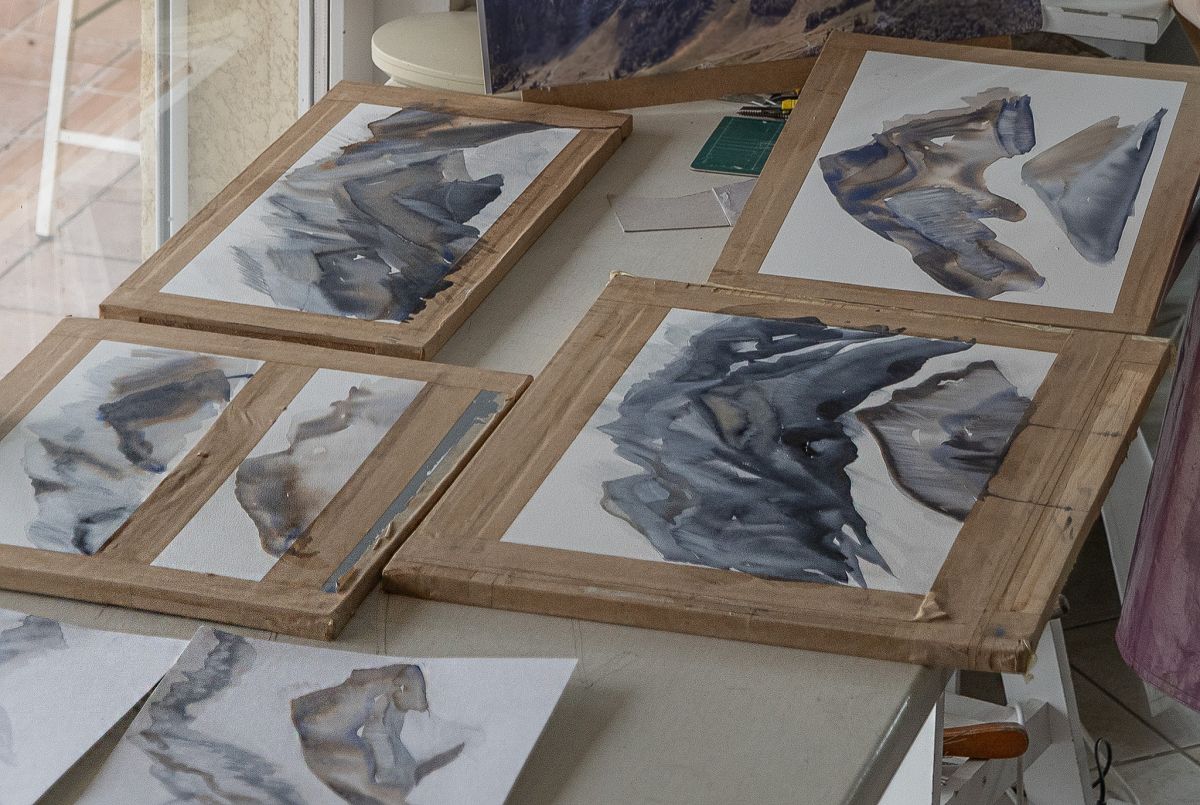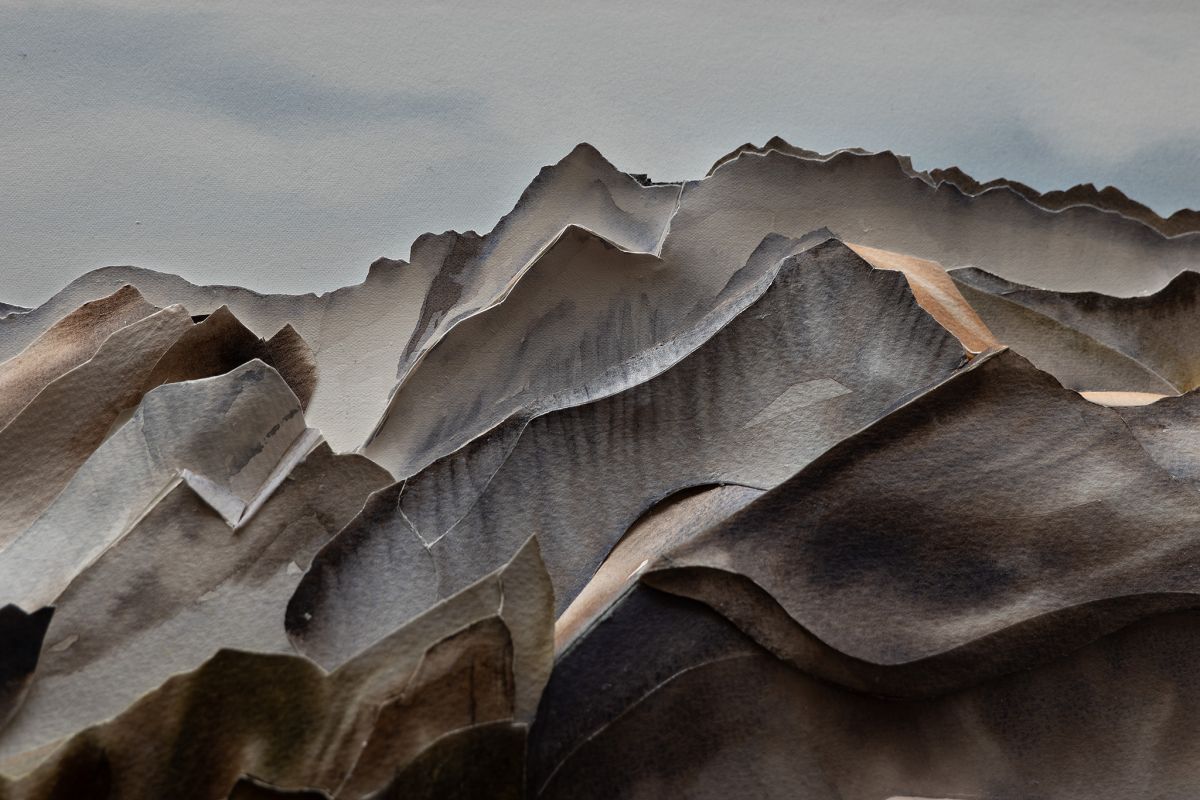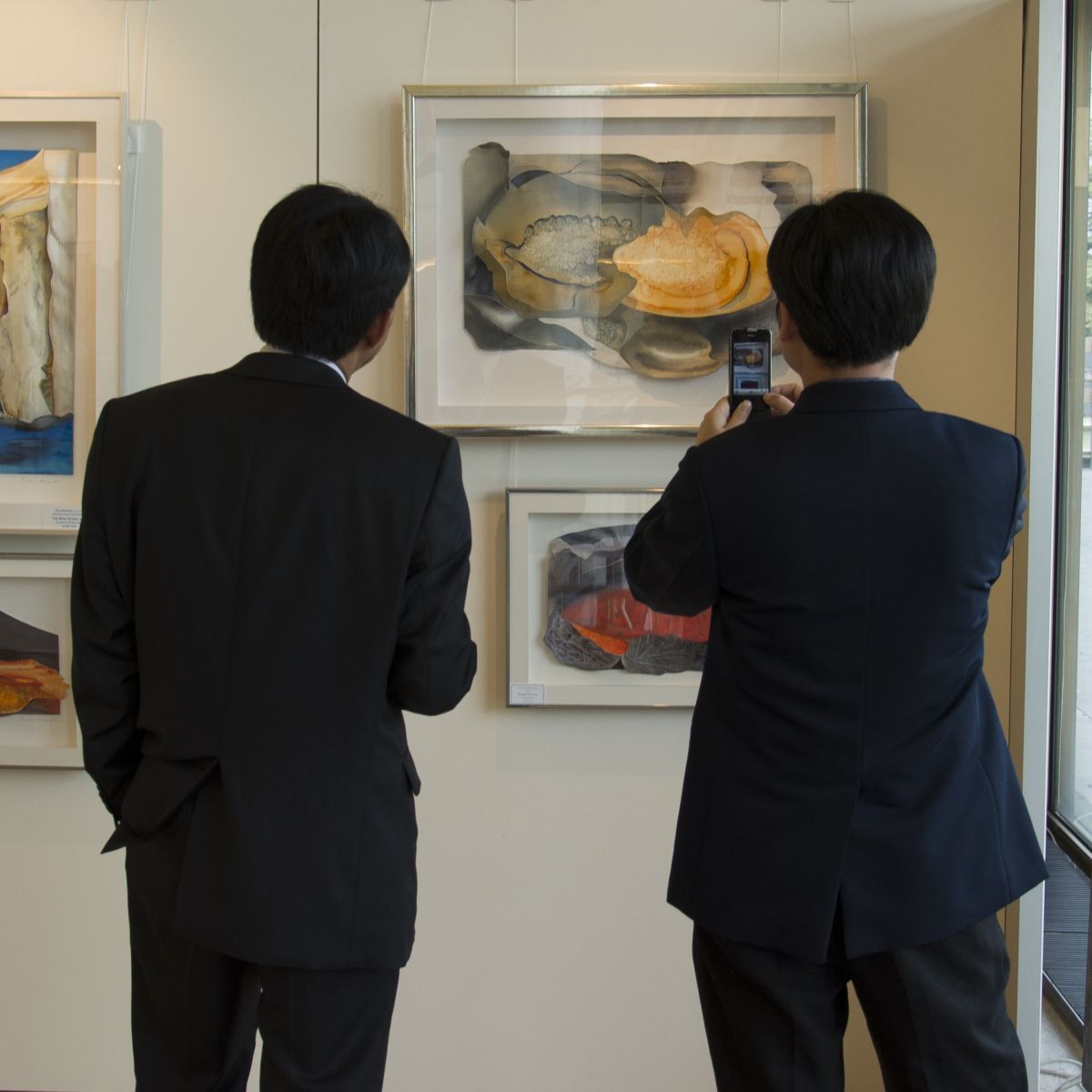A Lifelong Dedication to Watercolour
Refining the Art of Sculptural Watercolour Over Decades
“For twenty-five years, since its conception, I have never had to change my operation. The formula has improved, and I can honestly say I have had only one complete failure.”
— Prue Bishop
Prue Bishop’s artistic journey has been one of constant refinement, yet her core methods and philosophy have remained unchanged. Her process—stretching, cutting, sculpting, and layering watercolours—has stood the test of time, proving that this genre of painting is both enduring and unique.
This section explores how years of dedication and innovation have shaped her approach, why she remains committed to pure watercolour techniques, and why AI will never replicate this craft.
1️⃣ A Method Perfected Over 25 Years
While many artists experiment with different styles, Prue has spent decades perfecting a single artistic approach—Sculptural Watercolour®.
✔ Her process has remained unchanged since she first developed it.
✔ Every piece follows the same precise construction, ensuring longevity and depth.
✔ Only one complete failure in twenty-five years—a testament to the durability of her technique.
Example: The Evolution of Pilatus
A recent painting of Mount Pilatus exemplifies how Prue’s technique has matured. She initially struggled with the middle-ground depth, requiring multiple reconstructions before achieving the perfect balance between perspective and structure.
💡 "It’s a genre—one that has taken me decades to master."
2️⃣ The Enduring Power of Watercolour Tradition
Unlike other contemporary artists who blend watercolour with acrylics or mixed media, Prue remains deeply committed to traditional watercolour materials and techniques.
✔ Uses centuries-old paper sizes—inspired by Turner and the Tate collection.
✔ Never joins sheets together or enlarges—each piece must fit the original paper dimensions.
✔ Follows classic stretching techniques—ensuring smooth, controlled washes.

Example: The Significance of Paper Choice
Prue uses 300g watercolour paper, following historic watercolour traditions. Unlike oil painters who can resize their canvases, watercolourists must work within the paper's natural limits, adding another layer of precision to the art form.
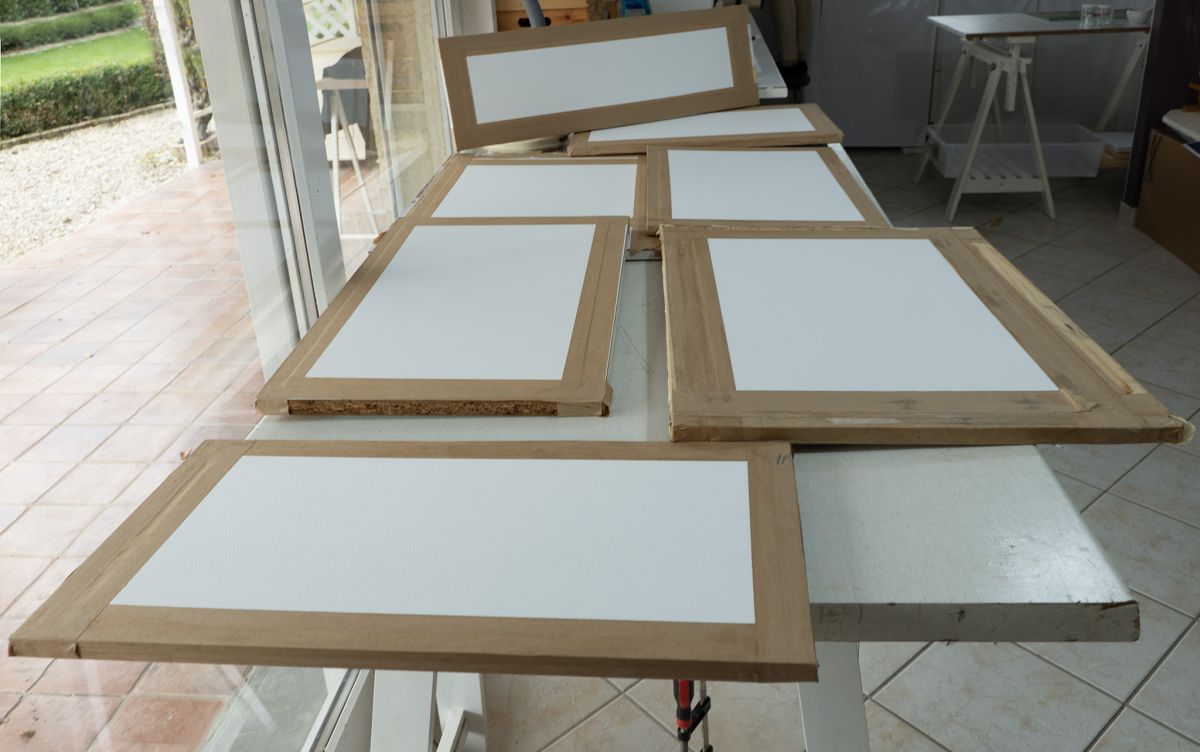
💡 "Watercolour painters have always worked within strict boundaries. That’s part of the challenge."
3️⃣ The 3-Pigment Rule: Colour Mastery
Rather than using an unlimited palette, Prue follows the “Three-Pigment Rule”, a method that results in perfectly balanced compositions.
✔ Each painting contains only three pigments, mixed to achieve depth and realism.
✔ The complementary colour principle ensures vibrancy—as seen in Turner’s and Constable’s works.
✔ Earth pigments bring natural harmony—often collected from the landscapes she paints.
Example: Mixing the Perfect Rock and sea colours for the Maltese Blue Lagoon
When painting the Maltese Blue Lagoon, Prue used only three colours: ultramarine, burnt sienna, and ochre—a blend that perfectly captured the subtle, sun-bleached tones of the landscape.
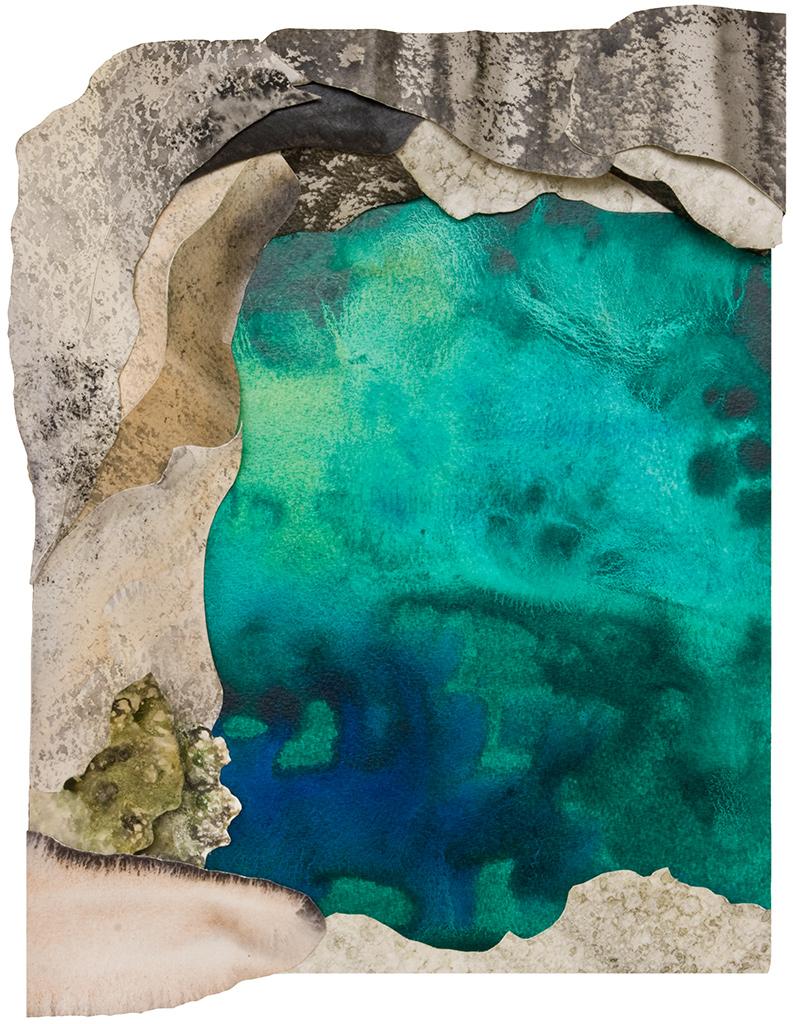
💡 "Less is more. If the colours are chosen carefully, the entire painting will feel natural and alive."
4️⃣ The Challenge of Framing a Sculptural Watercolour
Unlike flat paintings, Sculptural Watercolours must be designed with framing in mind.
✔ Each piece pushes the limits of traditional framing—glass must be carefully spaced.
✔ Calculations must be precise—too much depth, and the work cannot be framed.
✔ Sometimes entire paintings are restructured to fit within framing constraints.
Example: The Fragile Balance of Sculptural Watercolour
One of Prue’s most intricate works required multiple adjustments when framing, as one raised element nearly touched the glass, forcing her to recalculate the entire perspective.
💡 "I’m not just designing a painting—I’m designing how it will exist in space."
5️⃣ Why AI Cannot Replicate Sculptural Watercolour
In an era where Artificial Intelligence can generate digital watercolour paintings in seconds, Prue’s work remains something AI cannot recreate.
✔ AI can simulate 2D brushstrokes, but it cannot build physical dimension.
✔ Each piece is a tactile experience—you can run your fingers along the edges.
✔ The layering, cutting, and sculpting process is entirely human—no algorithm can mimic it.
Example: The Human Touch in Every Detail
AI can analyze millions of watercolour paintings, but it cannot physically cut, shape, or layer them. Prue’s technique requires intuition, adaptability, and hands-on craftsmanship—qualities no machine possesses.
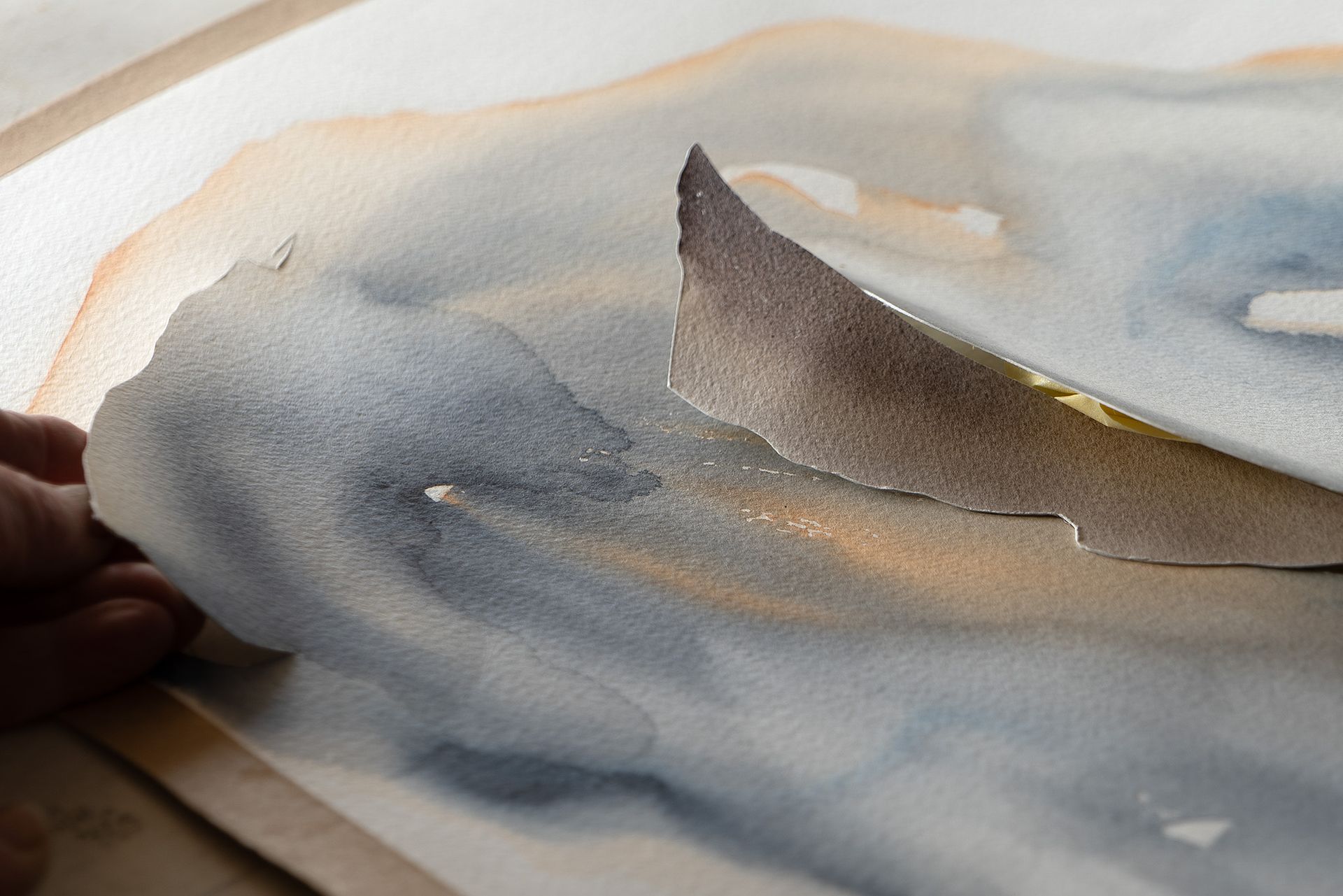
💡 "AI can generate images, but it will never hold a tenon saw and reshape a painting."
Final Thoughts: A Lifetime of Mastery & Innovation
For Prue Bishop, watercolour painting is more than a medium—it is a lifelong commitment to craftsmanship, technique, and innovation.
✅ Return to the Main “Learn More” Page
✅ Browse the Full Collection of Sculptural Watercolours, France, Switzerland and Global Warming
